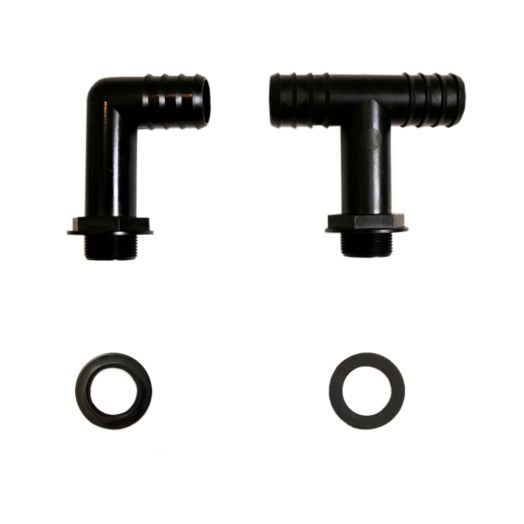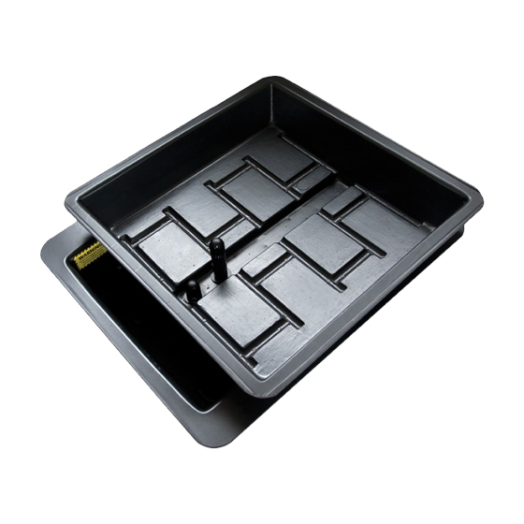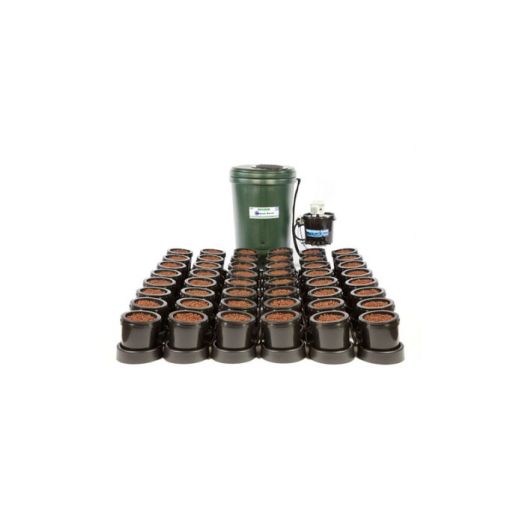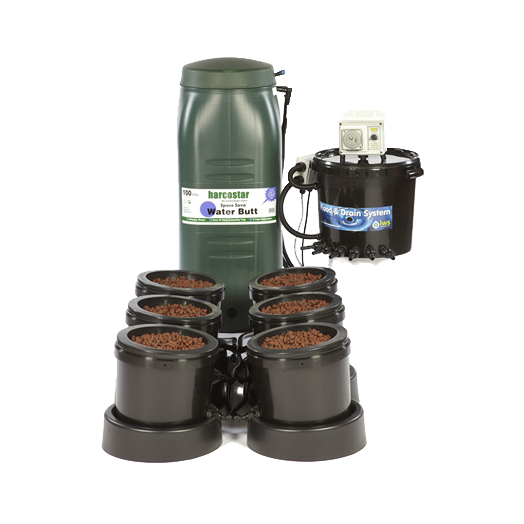Flood & Drain Systems

Flood and Drain systems work on a simple principle; a timer triggers a pump in the reservoir to transport the nutrient solution to the top planter, which fills up until the solution starts returning to the reservoir via a drain port. The draining nutrient/water solution draws fresh air back into the root zone leading to a perfect mix of water, nutrients, and oxygen, providing a strong ratio for fast plant growth. For more info on Flood and drain systems and how to implement them in your indoor garden, read our buyer's guide
Flood and Drain
Otherwise known as Ebb and Flow, Flood and Drain systems can consistently produce heavier yields than hand watering. Due to the simple nature of ebb and flow, It reliably produces results with little chance of failing as the only moving part is a pump.
Flood and Drain systems are versatile and can be used with a number of substrates; Coco, clay balls, 60/40, rockwool cubes or rockwool slabs.
How often to feed in a flood and Drain? Based on several considerations:
Drainage capabilities of the medium
- The amount of water your substrate absorbs will affect your watering frequency, with higher absorbances like coco requiring fewer floods per day and fast draining mediums like clay balls requireing more.
Size of your containers
- More medium will soak up more water - even clay balls are porous and will absorb water - the more medium you have the longer it will take this water to absorb
Size of your plants.
- As your plants mature and become larger, their rate of transpiration will increase and they’ll drink more water and require stronger nutrients.
Size of your reservoir.
- If your reservoir is small in comparison to the top planter your pH and EC will fluctuate much faster than if you’ve got a larger reservoir.
How often to change solution in reservoir?
You’ll need to examine your Flood and Drain system at least once a week to check the pH and EC as these will both drift over time depending on the plant’s requirements - the plants can selectively use particular elements from the solution which will alter the chemistry of the remaining solution.
During the early stages of growth, pH and EC shouldn’t change too much, so you can go longer between tank changes - as much as two weeks with top-ups in between. During heavy flower or fruiting, you’ll want to fully replace the nutrient solution at least once a week up to once every 3 days - the more frequently you change the solution in the reservoir the better your results will be.
Due to the variability in Ebb and Flow systems, what works best for you will require some trial and error; and may change between cycles. Some variability in pH will aid in nutritional uptake as certain nutrients are more available just below or just above 6.2/6.3. Ideally you should pH to around 6, as this facilitates nitrogen uptake and then let the pH drift up to 6.4 or 6.5 before pHing back down to 6. pH levels above 6.3 lean more towards phosphorous and potassium uptake, so drifting through this range of pH allows for all nutrients to be uptaken, with none locked out.
If you need more info on the Flood and drain technique, email us or call our specialist team on 0800 085 7995.














